Endangered birds of KwaZulu-Natal: a call to action
Text and photographs Nicolette Forbes
KwaZulu-Natal (KZN) is a province of incredible biodiversity, boasting an array of habitats that support a rich variety of bird species. From the towering peaks of the Drakensberg to the coastal wetlands and expansive savannas, this region provides sanctuary to many special bird species.
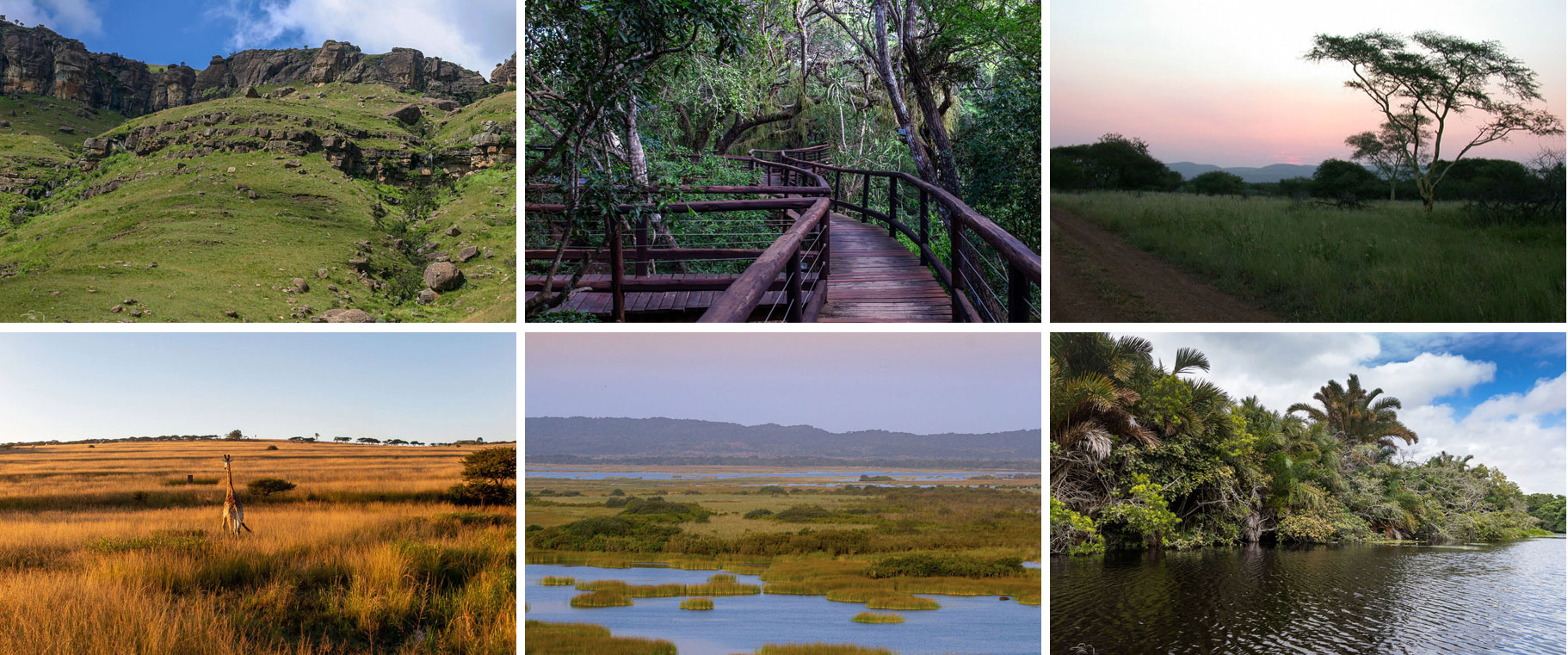
Habitat diversity in KZN results in an astonishing bird diversity.
However, several of these species face severe threats, placing them at risk of extinction. Habitat loss, climate change, pollution, and human encroachment are among the primary culprits driving many of KZN’s birds toward the brink. This article highlights some of the most endangered bird species in the province and the urgent need for conservation efforts to ensure their survival.
The IUCN Red List categorises bird species based on their risk of extinction. The categories, from least concern to most threatened, are:
Least Concern (LC): Species with stable or large populations that face no immediate risk of decline.
Near Threatened (NT): Species that are close to qualifying as threatened due to population declines or habitat threats.
Vulnerable (VU): Species facing a high risk of extinction in the wild due to rapid population declines, habitat loss, or other threats.
Endangered (EN): Species at a very high risk of extinction due to severe declines or extremely restricted ranges.
Critically Endangered (CR): Species at an extremely high risk of extinction in the near future, often with fewer than 250 mature individuals remaining.
Extinct in the Wild (EW): Species that survive only in captivity or controlled environments, with no known wild populations.
Extinct (EX): Species for which there is no reasonable doubt that the last individual has died.
Each category is based on specific criteria, including population size, rate of decline, geographic range, and threats to survival. The good news is that the two worst IUCN categories Extinct (EX) and Extinct in the Wild (EW) do not apply to birds in our region – yet! However a number of birds are now starting to creep into Critically Endangered (CE), and Endangered (EN) and there are even more listed as Vulnerable (VU) and Near Threatened (NT).
Habitat loss: the primary threat
Habitat loss is one of the most significant threats to bird populations worldwide, and our local KwaZulu-Natal is no different. It directly reduces the space and resources birds need for survival. The destruction of forests, wetlands, grasslands, and other ecosystems due to agriculture, urban expansion, logging, and infrastructure development fragments natural landscapes and forces birds into smaller, more isolated areas. Many species struggle to adapt to these changes, leading to population declines and, in extreme cases, local or global extinctions. Birds that depend on specialised habitats, such as forest-and grassland dependent species or wetland birds, are particularly vulnerable because their ecological niches cannot easily be replicated elsewhere. When habitats shrink or disappear, food sources decline, nesting sites become scarce, and competition with other species intensifies, placing additional stress on bird populations.
Beyond outright habitat destruction, the fringe effects of human development—such as artificial lighting, noise pollution, and other disturbances—also have severe consequences for birds. Light pollution disrupts the natural behaviour of nocturnal species and migratory birds that rely on the stars for navigation, often causing fatal collisions with buildings or exhaustion from disorientation. Noise pollution from traffic, industry, and human activities interferes with birds’ communication, making it harder for them to attract mates, warn of predators, or defend territories. Even small disturbances like frequent human presence, pet activity, or recreational use of bird habitats can reduce breeding success and force birds to abandon nesting sites. Over time, these cumulative effects can significantly reduce population numbers, particularly in urban and peri-urban areas where natural habitats are already under pressure. Addressing habitat loss and fringe effects requires conservation strategies that include habitat protection, responsible urban planning, and minimising human disturbances in sensitive areas to ensure birds have safe spaces to thrive.
The loss of these habitats not only reduces available food sources but also increases vulnerability to predators and climate extremes, further exacerbating the decline of bird populations.
Blue Swallow
The Blue Swallow (Hirundo atrocaerulea) is a species listed as one of South Africa’s most endangered bird species. It is a strikingly beautiful bird known for its striking iridescent blue plumage and graceful aerial acrobatics. It is highly dependent on mist belt grasslands and montane areas in KwaZulu-Natal (KZN) and parts of Mpumalanga, where it nests in old aardvark or porcupine burrows. Unfortunately, these habitats are rapidly vanishing due to agriculture, afforestation, and urban expansion. Blue Swallows are intra-African migrants, arriving in KZN in September to breed and departing around March for their non-breeding grounds in a small area in the Lake Victoria Basin stretching from the north-east of the DRC to the extreme west of Kenya. Adults often return to the same breeding site in successive years with the males arriving before females.
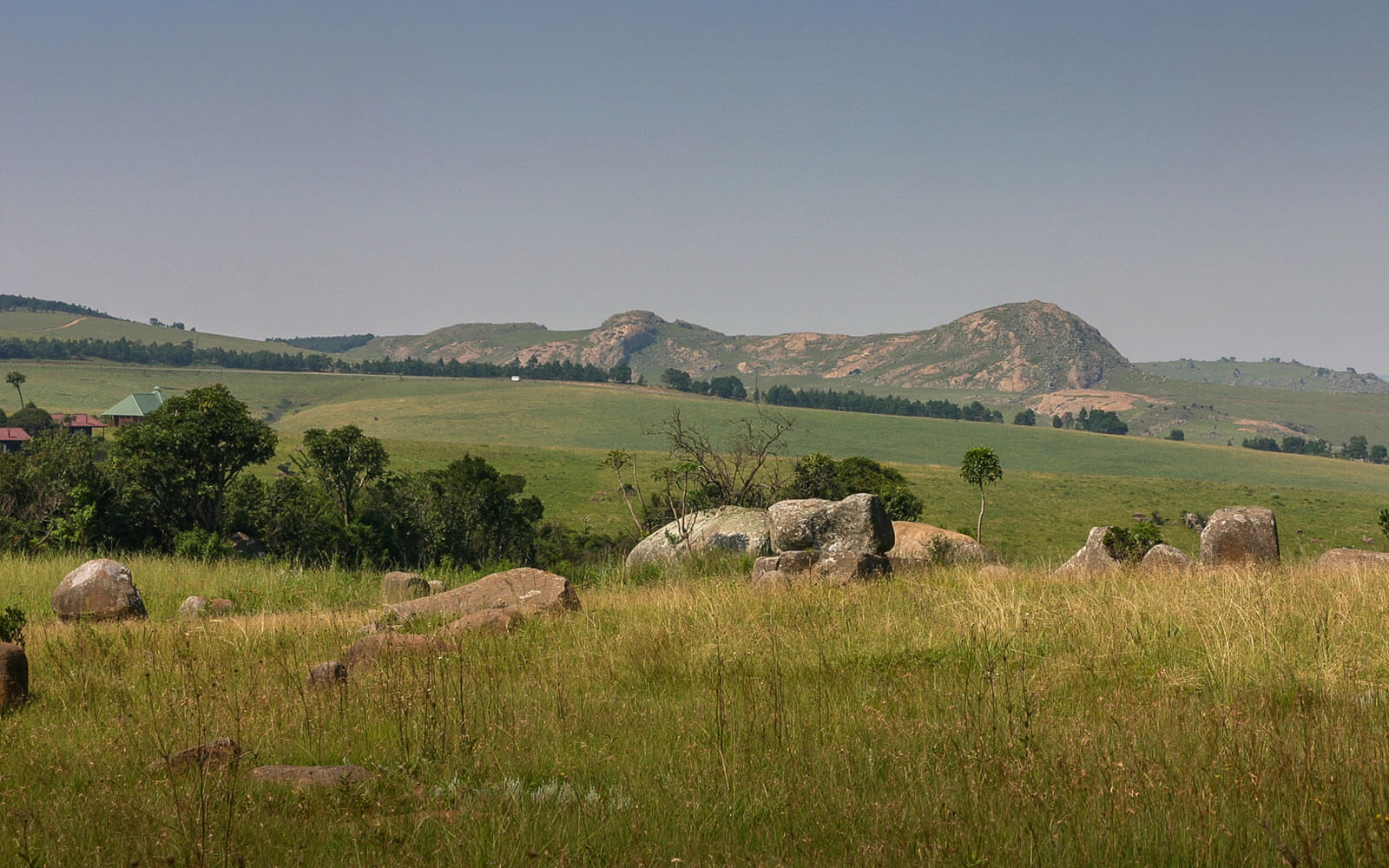
Perfect Blue Swallow breeding habitat at Malolotsha Game Reserve, Swaziland.
The mistbelt grasslands they depend on are rapidly disappearing due to commercial afforestation (pine and eucalyptus plantations), agriculture, and urban expansion. Fragmentation of these habitats makes it harder for swallows to find suitable breeding sites, while insecticide use reduces their food supply. Climate change and increasing human disturbances further exacerbate their decline. Conservation efforts in KZN, such as protected areas like the Karkloof and Ngongoni Reserves, habitat restoration, and initiatives to promote sustainable land use, are crucial for the survival of this species. Despite these efforts, Blue Swallow numbers remain dangerously low, making continued conservation action essential to prevent their extinction in South Africa. With fewer than 100 breeding pairs left in South Africa, urgent conservation measures—including habitat restoration and sustainable land management—are crucial to prevent the extinction of this elegant bird.
Cranes | Wattled and Grey Crowned Crane
A symbol of wetland conservation, the Wattled Crane (Bugeranus carunculatus) is one of Africa’s rarest crane species. This large, stately bird is reliant on high-altitude wetlands for breeding and foraging, making it extremely vulnerable to habitat degradation. Draining of wetlands for agriculture, water pollution, and disturbances caused by human activities have led to alarming declines in their numbers. Efforts such as wetland restoration, responsible water management, and community-driven conservation programs are vital in preserving their populations.
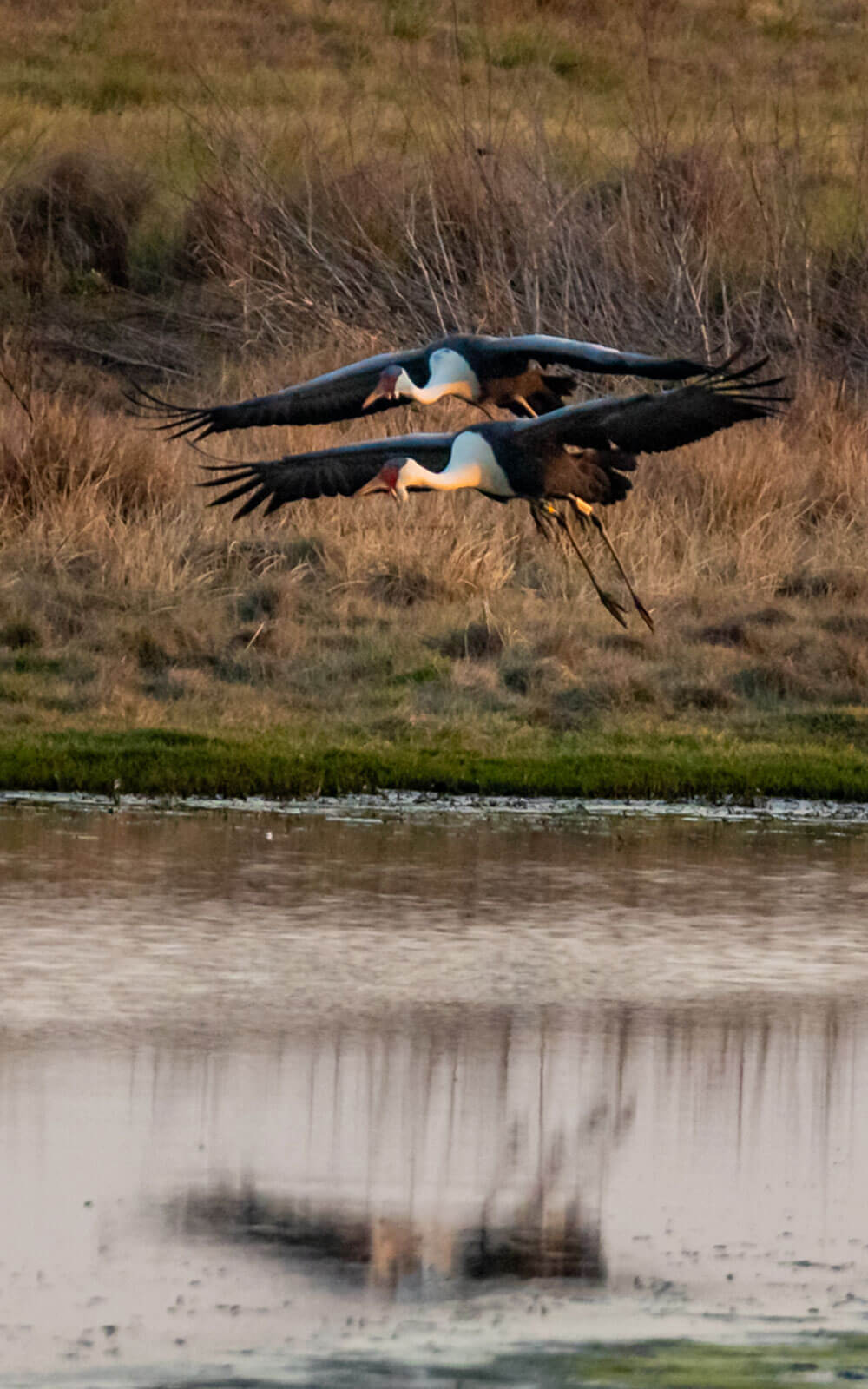
Wattled crane coming into land
Grey Crowned Crane (Balearica regulorum), with its striking golden crest and elegant stature, is an iconic species of Africa’s wetlands and grasslands. While still relatively widespread, its numbers are in decline due to habitat destruction, poisoning, and the illegal pet trade. Wetland drainage for agriculture and human settlement has severely impacted its breeding sites, leading to local population collapses. Conservation efforts must focus on preserving wetlands, enforcing anti-poaching laws, and engaging communities in crane-friendly agricultural practices to ensure the survival of this spectacular species.
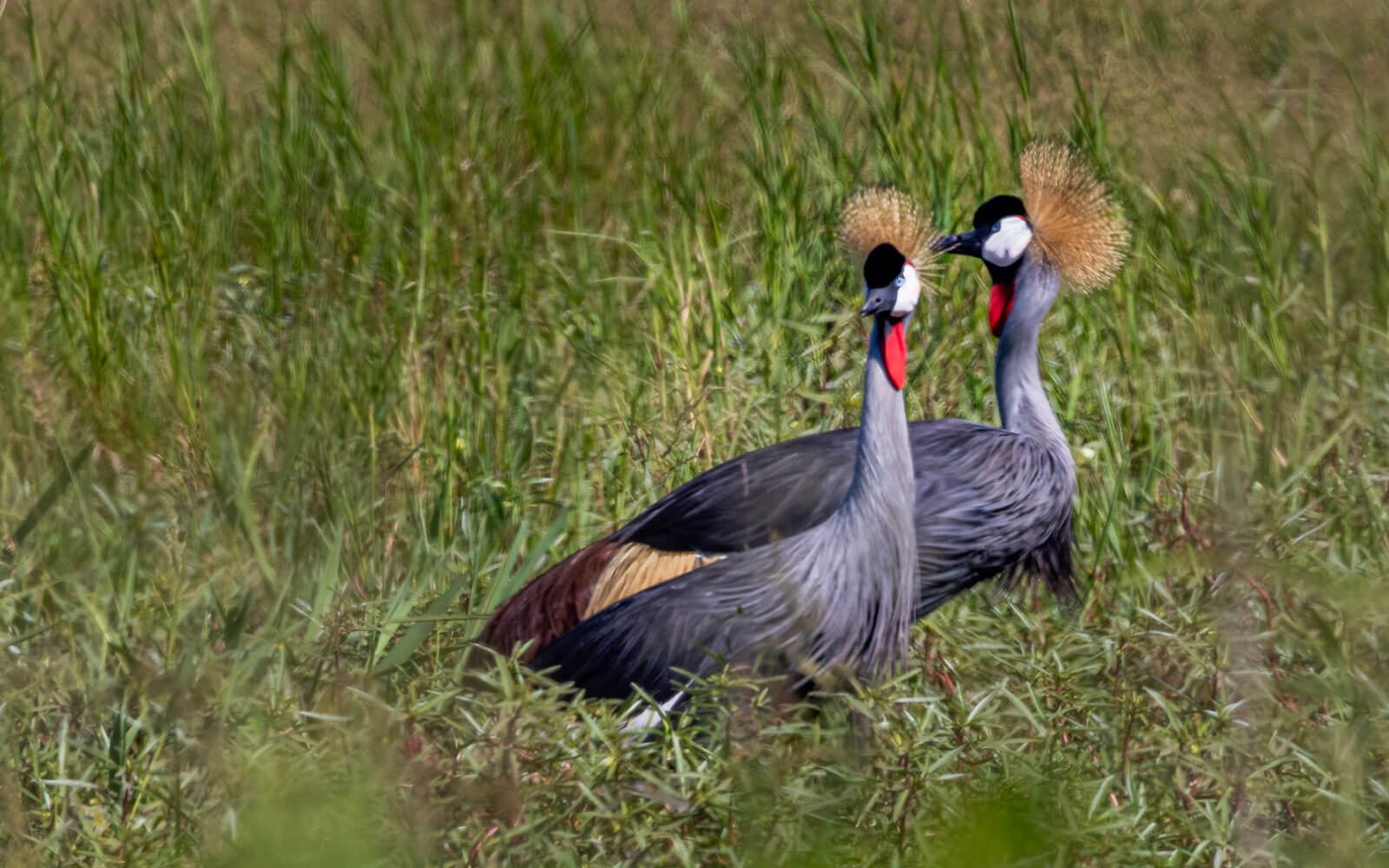
Grey Crowned Crane in prime rank grassland and wetland habitat
Crowned Eagle
A well-known denizen of the forests in the upper Highway area and one of Africa’s most powerful and striking raptors, the Crowned Eagle (Stephanoaetus coronatus) is well-known for its exceptional hunting skills. In KwaZulu-Natal, this eagle is primarily found in densely wooded areas, including coastal and montane forests, riverine woodlands, and even large urban green spaces like the forests around Durban. Crowned Eagle are highly territorial and monogamous, often using the same nesting sites for decades. They construct massive stick nests high in the canopy, where they raise one chick every two to three years. These raptors are apex predators, preying mostly on medium-sized mammals such as monkeys, dassies (rock hyraxes), small antelope, and even domestic animals in urban areas. Their remarkable ability to navigate dense forests and ambush prey makes them unique among African eagles.
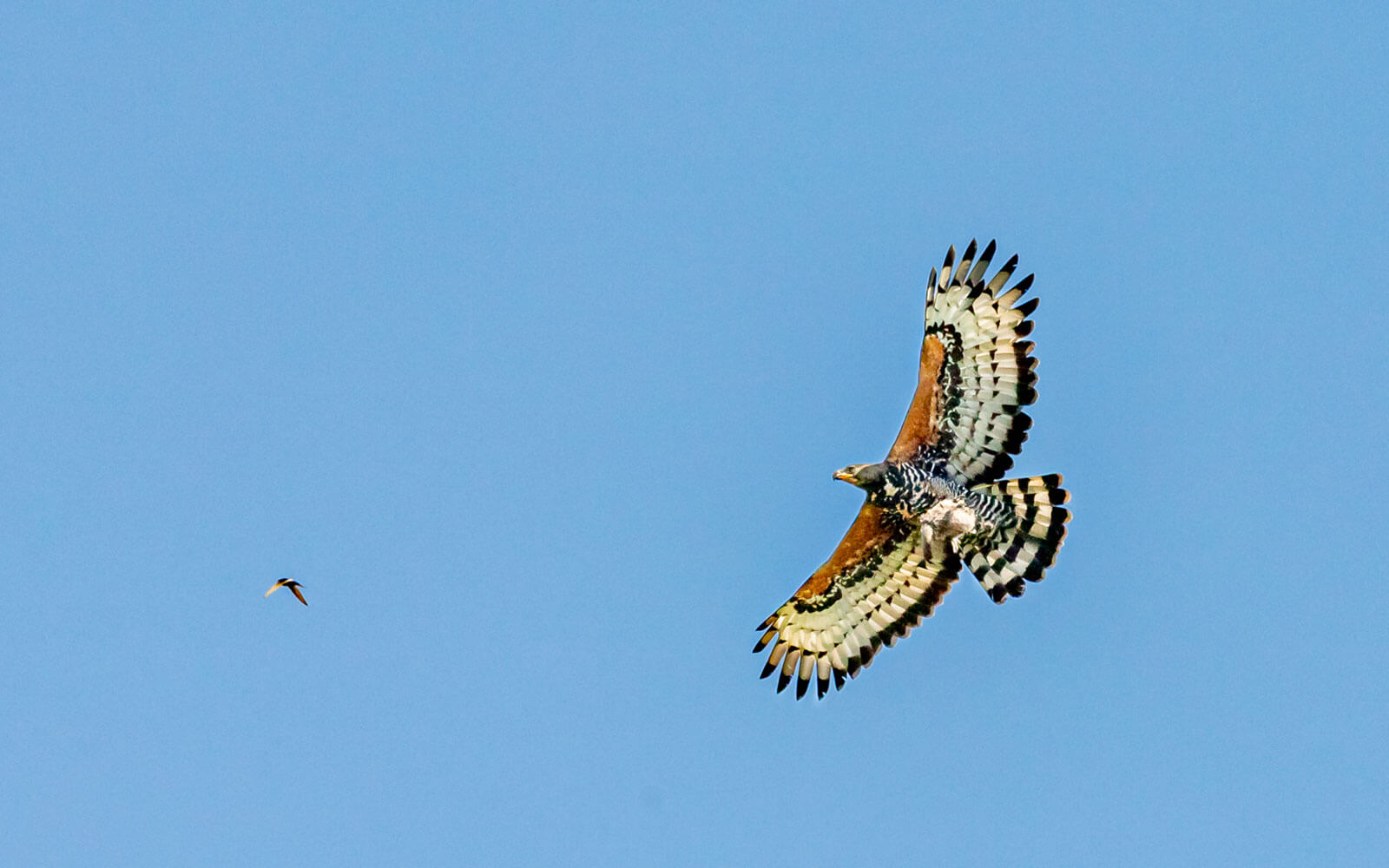
A soaring Crowned Eagle with prey at Springside Nature Reserve.
Despite their formidable presence, Crowned Eagle face significant threats in urban and rural areas due to habitat loss, human-wildlife conflict, and persecution. Expanding urbanisation, deforestation, and infrastructure development are reducing their available nesting sites and hunting grounds. In areas like Durban’s greenbelts, they sometimes adapt to peri-urban environments but risk conflict with humans, particularly when they prey on small pets or livestock. Additionally, power line collisions, poisoning, and shooting contribute to population declines.
Conservation efforts in KZN focus on protecting forested areas, reducing human-wildlife conflict, and monitoring urban populations to ensure their survival. Public awareness campaigns and conservation programs in reserves like Krantzkloof Nature Reserve and Hluhluwe-iMfolozi Game Reserve help safeguard this magnificent raptor, but ongoing habitat protection remains critical for the species’ future in the province. Raising awareness about the ecological importance of this apex predator is key to ensuring its continued existence.
Botha’s Lark
Botha’s Lark (Spizocorys fringillaris), is South Africa’s most threatened endemic bird species. A highly localised species it has unfortunately recently been uplifted to Critically Endangered on the IUCN red list. It is restricted to small patches of highland grasslands in South Africa, including parts of KZN. The main threat to its survival is habitat destruction due to overgrazing, agricultural expansion, and invasive plant species. With a declining population, conservation actions such as securing protected areas and implementing sustainable grazing practices are essential to safeguard this rare bird. BirdLife South Africa has a programme in place to try to arrest the dramatic and alarming decline in the population of Botha’s Lark. The species faces a high probability of extinction without conservation action.
Spotted Ground Thrush
Secretive and highly localised, Spotted Ground Thrush (Geokichla guttata) are found in the coastal and mistbelt forests of KZN. This species is at significant risk due to deforestation, habitat fragmentation, and the degradation of forest understories caused by invasive plant species. Urban expansion and human disturbance further threaten its fragile populations. Conservation efforts focusing on forest preservation and invasive plant control are essential to ensuring the survival of this rare and beautiful thrush.
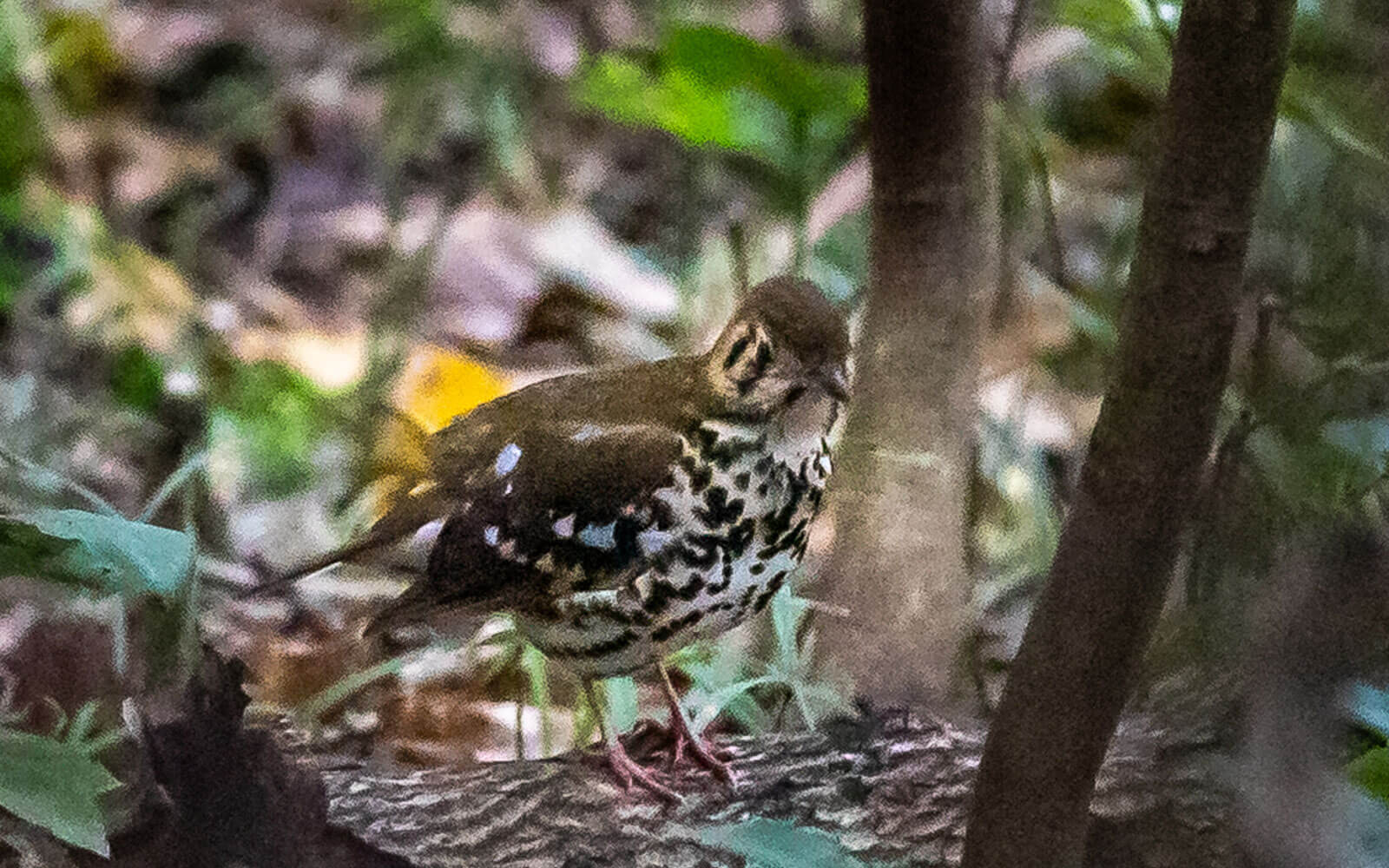
Spotted Ground Thrush on the forest floor.
Loss of Southern Ground Hornbill and Secretarybird
Historically, the Kloof area would have been home to large terrestrial birds such as the Southern Ground Hornbill (Bucorvus leadbeateri) and the Secretarybird (Sagittarius serpentarius). However, extensive urbanisation and habitat fragmentation have led to their disappearance from this region. These birds require vast open landscapes for foraging and nesting, which have been lost to housing developments, roads, and commercial expansion. Protecting and restoring natural habitats remains essential to preventing further losses of such iconic species.
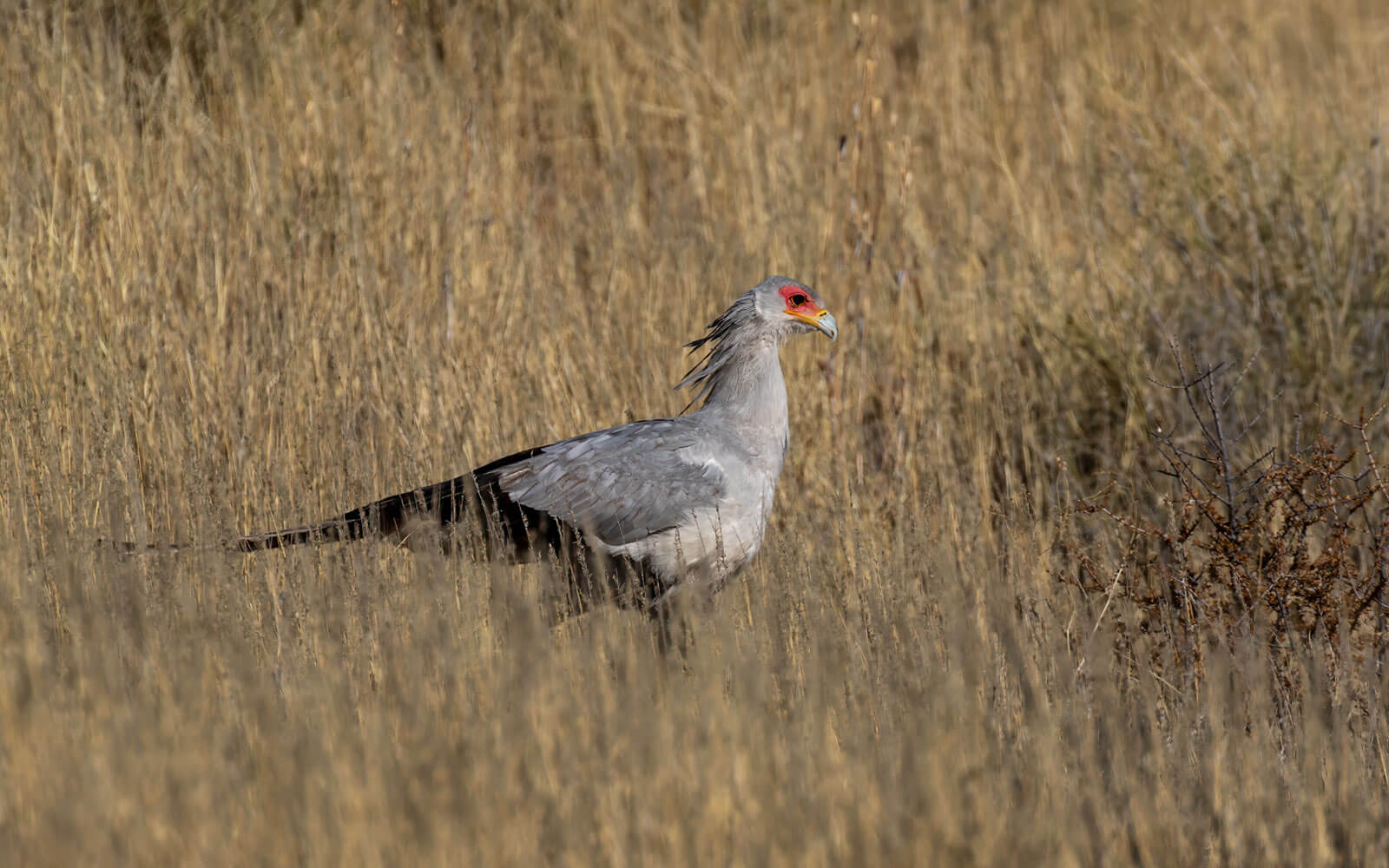
Secretarybirds need all the help and space that they can get.
Southern Banded Snake Eagle
This elusive raptor, typically found along the coastal forests of northern KZN, is under severe threat due to deforestation and habitat fragmentation. The Southern Banded Snake Eagle (Circaetus fasciolatus) relies on dense, undisturbed woodland to hunt small reptiles and amphibians. Its population decline is directly linked to the clearing of coastal forests for agriculture, human settlements, and industrial development. Conservation initiatives that protect and rehabilitate coastal forests are essential for ensuring the survival of this species.
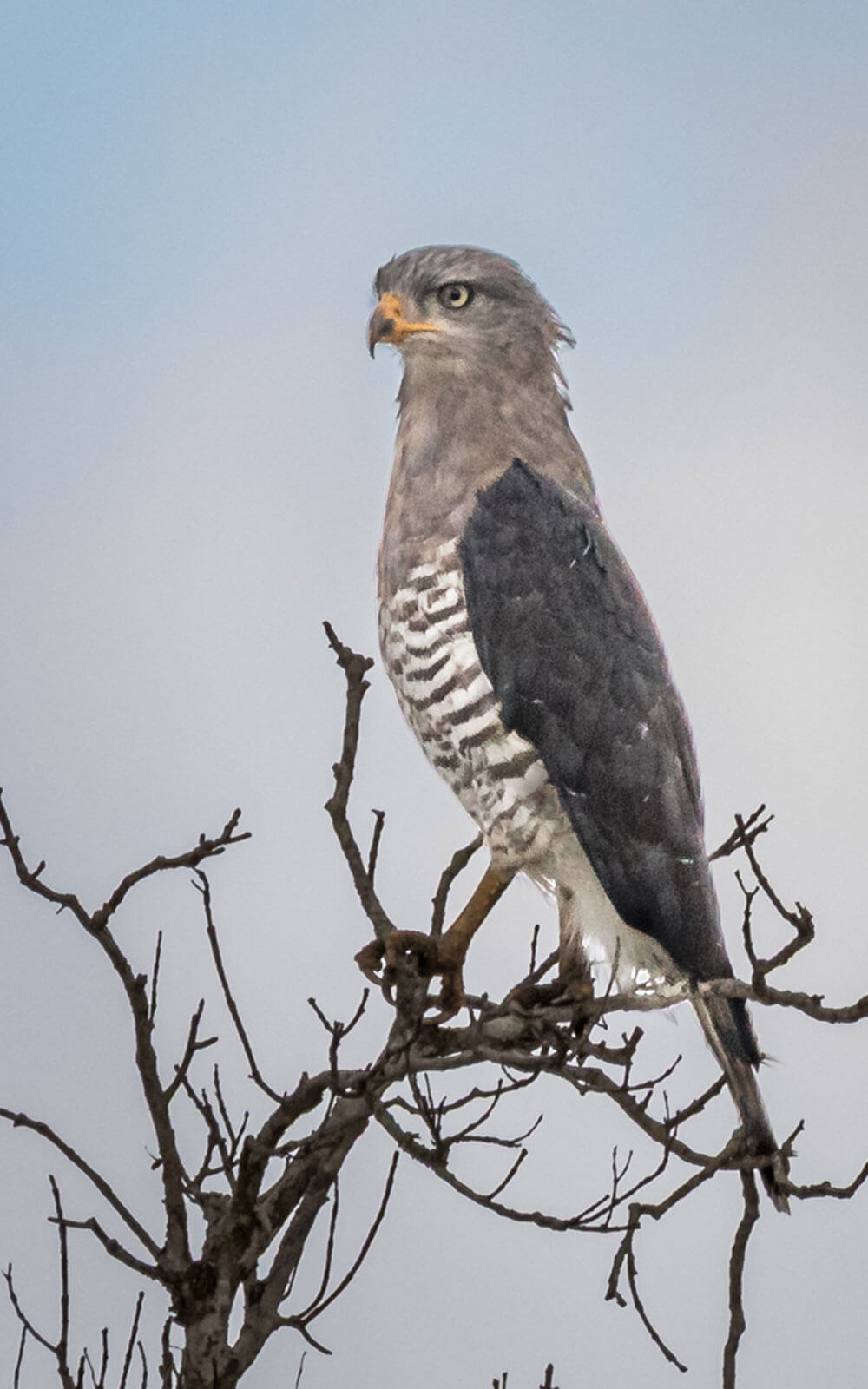
Southern Banded Snake Eagle first described from the Durban area in 1848
Ayres’s Hawk-Eagle
An intriguing trend in the greater Durban area, particularly in regions like Kloof and the Highway area, is the increasing presence of Ayres’s Hawk-Eagle (Hieraaetus ayresii). This agile and powerful raptor is typically associated with woodland and forested areas, but it has been adapting to more urbanised environments. The rise in sightings may be linked to changes in prey availability, habitat shifts, or even competition with other raptor species. While not currently classified as endangered, monitoring its urban expansion is crucial to understanding its impact on both native and non-native bird populations in these areas.
Red-backed Mannikin and Magpie Mannikin
Another fascinating and encouraging development in the urban birdlife of the Kloof and Highway areas is the increasing presence of two less common mannikin species: the Red-backed Mannikin (Spermestes bicolor) and the Magpie Mannikin (Spermestes fringilloides). Once extremely difficult to spot, these striking finches have become more common due to the growth and preservation of indigenous habitat in suburban gardens, parks, and reserves. The proliferation of indigenous vegetation provides ample food sources and nesting opportunities, demonstrating how habitat restoration can positively impact avian biodiversity, even in urban settings.
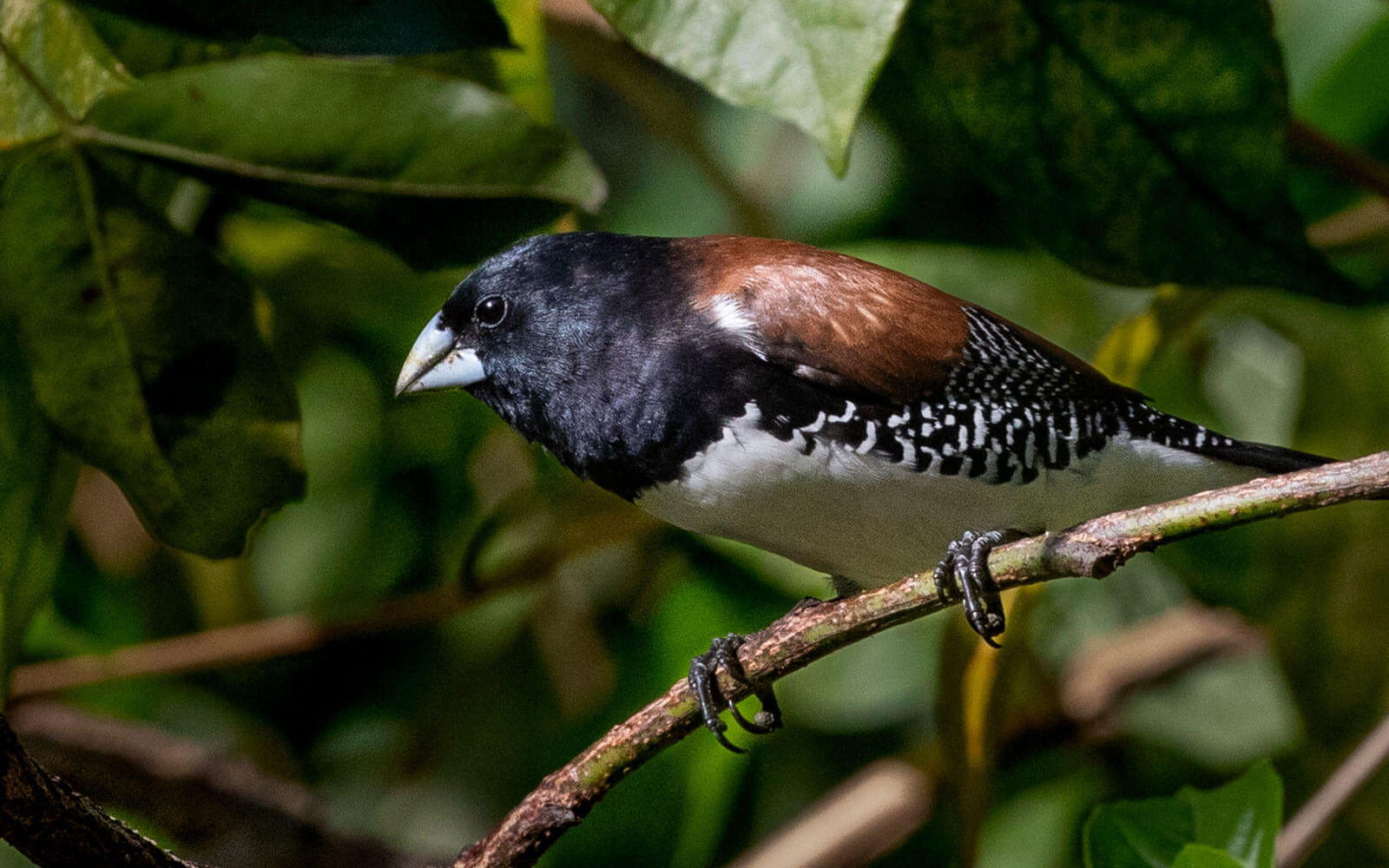
Red-backed Mannikin, one of the three mannikin species to be found in the greater Durban area.
Red-backed Mannikin (Spermestes bicolor) are small, striking finches commonly found in KwaZulu-Natal’s forest edges, woodlands, and well-vegetated suburban gardens, including the Kloof area. This species is easily identified by its dark brown head, contrasting chestnut-red back, and white underparts with dark barring. Red-backed Mannikins are highly social and often seen in small flocks, foraging on grass seeds, reeds, and other small plant materials. In Kloof, they frequent bird-friendly gardens, particularly those with tall grasses and seeding plants. They nest in concealed areas within shrubs or trees, weaving small, dome-shaped grass nests. Their cheerful, twittering calls and flocking behaviour make them a delightful sight for bird enthusiasts in the region.
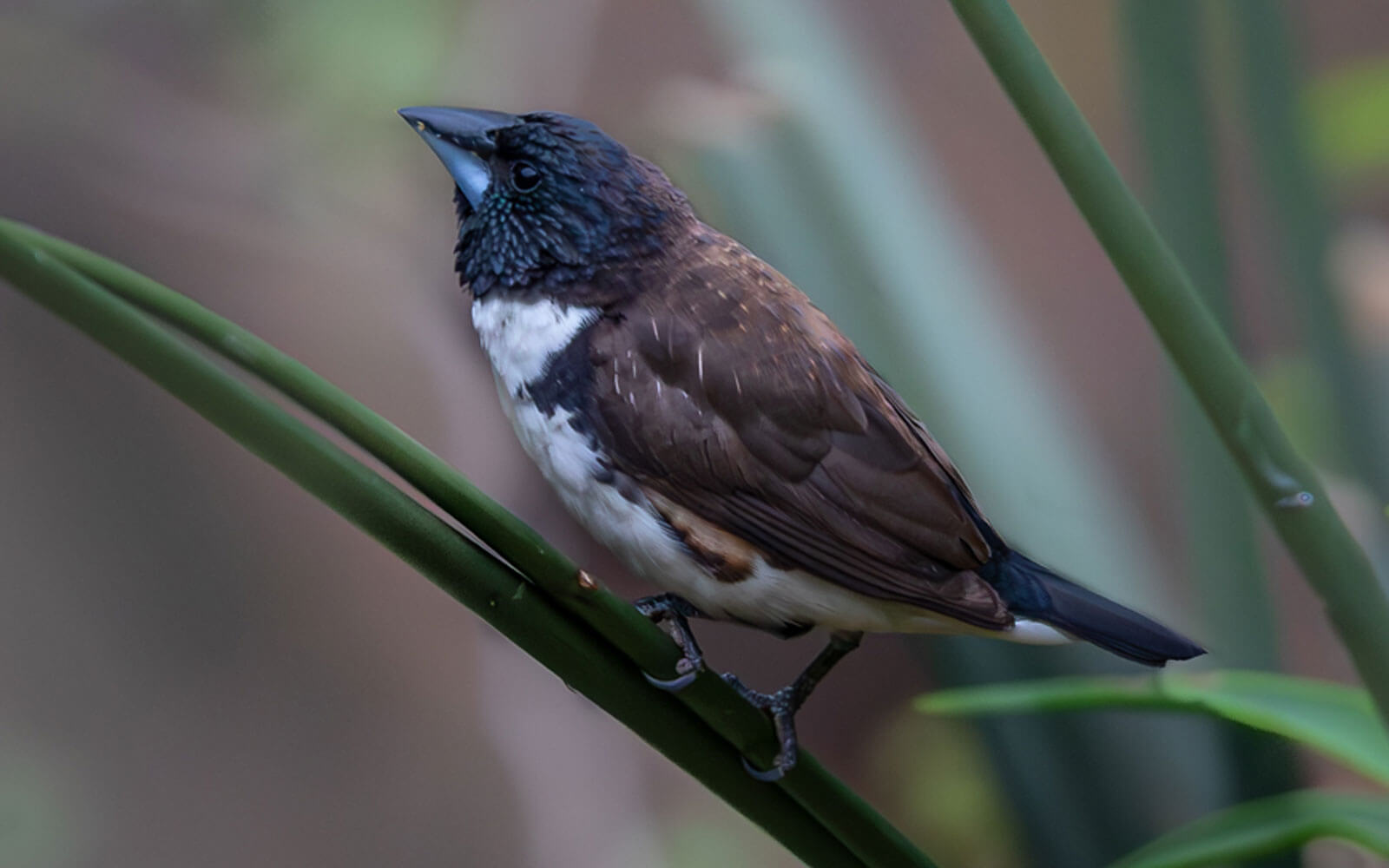
Magpie Mannikin, even rarer than Red-backed Mannikin, is also being seen more frequently in open spaces in Durban.
Magpie Mannikin though similar in size and behaviour, is much rarer and more localised in KZN, with Kloof and surrounding areas being one of the best places to spot them. Distinguished by their striking black-and-white plumage, these birds resemble their red-backed relatives but lack the chestnut-coloured back. They favour similar habitats—forest edges, gardens, and reedbeds—but are generally less common and more elusive. Magpie Mannikins are often seen in mixed flocks with Red-backed Mannikins, particularly in areas with abundant seeding grasses. Due to habitat fragmentation and the decline of suitable feeding and nesting sites, Magpie Mannikins are less frequently observed than their more widespread counterparts. However, well-maintained indigenous gardens and protected green spaces in the upper Highway and Kloof areas provide vital refuge for both species, ensuring their continued presence in the region.
Sentinel Rock Thrush
The Sentinel Rock Thrush (Monticola explorator) is a striking bird found in the high-altitude grasslands and rocky outcrops of KwaZulu-Natal (KZN). Males are particularly distinctive, with their rich chestnut underparts, blue-grey head, and dark wings, while females are more subdued in colouration. These birds are often seen perched on exposed rocks or fence posts, scanning for insects and other small prey. In KZN, they are most commonly found in the Drakensberg and other mountainous areas, where their preference for open, rugged terrain provides ideal foraging and nesting conditions. During the breeding season males deliver their melodious song from prominent perches adding to the wild beauty of these landscapes.
Although typically associated with high-altitude regions, the Sentinel Rock Thrush can venture down to lower elevations, particularly in winter to move to milder habitats. This has resulted in many more encounters with this species in the upper Highway area in suitable habitat as well as its similar cousin, Cape Rock Thrush. From a conservation point of view this species is not under significant threat, but habitat degradation and climate change could impact its range in the future. Birders in KZN who visit rocky escarpments and montane grasslands are likely to encounter this beautiful species, especially if they keep an eye out for its characteristic upright posture and habit of flicking its tail while perched.
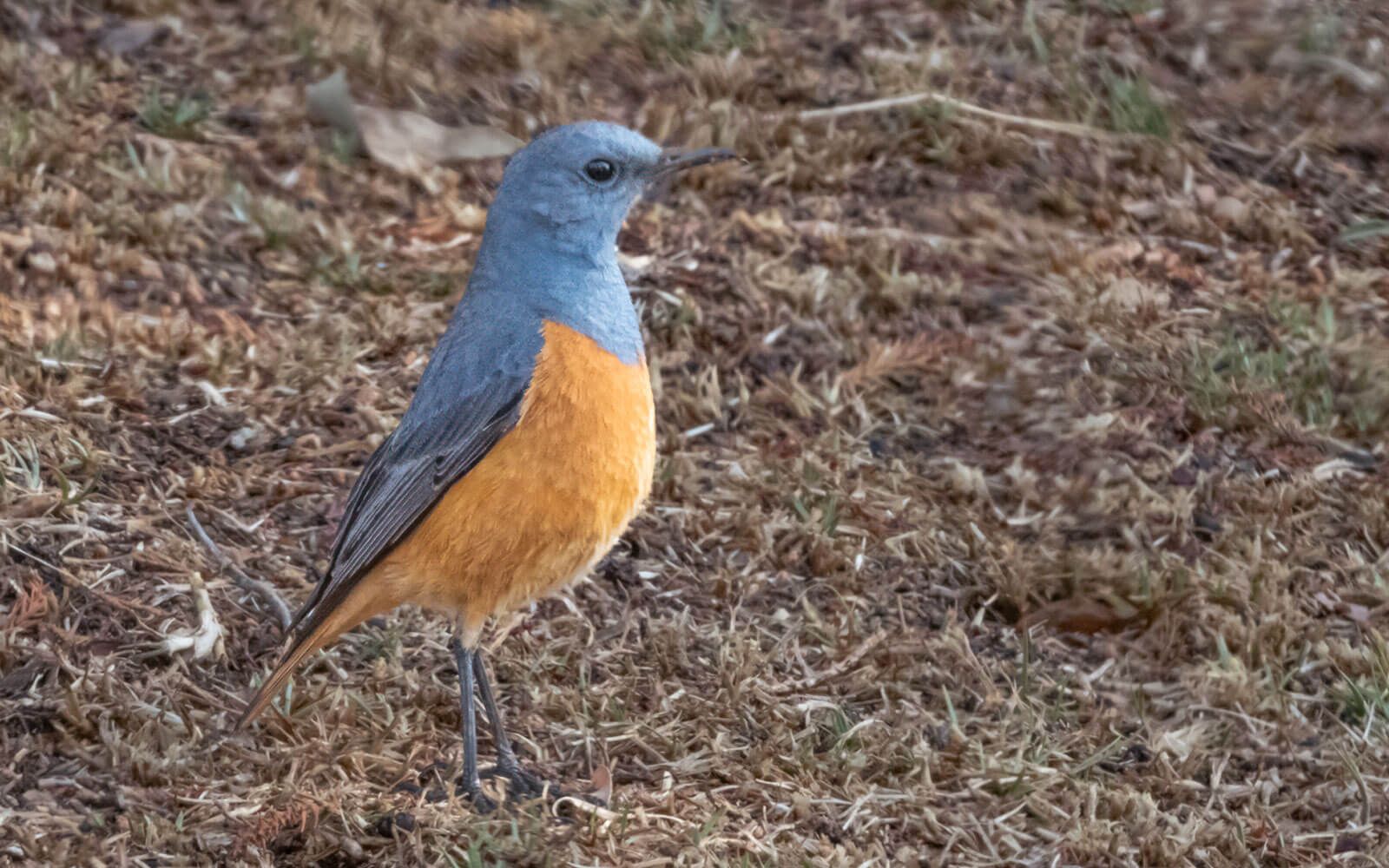
Sentinel Rock Thrush, a more unusual visitor to the upper Highway area.
What we can do in urban areas to assist
Urban environments can play a significant role in conserving bird species by promoting green spaces, indigenous gardens, and biodiversity-friendly development. Residents can assist by planting indigenous trees and shrubs that provide food and nesting opportunities for birds, eliminating pesticide use, creating safe water sources, and maintaining natural corridors between green spaces. All of these help to mitigate habitat loss. Furthermore, local authorities and city planners should prioritise the protection of remaining natural areas, incorporate bird-friendly designs in urban development, and support conservation programmes that engage communities in preserving biodiversity.

About the author
Nicolette Forbes was born in Durban and is passionate about all things KZN and its environments. With an interest in all things living from a young age it was no surprise that her chosen career path ended with her becoming a professional biologist having studied biological sciences at the University of Natal, Durban (now University of KwaZulu-Natal). Studying was followed by a lecturing stint to both biology and medical students for nine years before leaving the university to put her knowledge into practice with an ecological consultancy specialising in coastal habitat assessments.
Birding has been a passion from her high school days and birdwatching, atlassing. photography and being in the bush are her favourite things. Currently the Chair of BirdLife eThekwini KZN, the club covering the Greater Durban area, Nicolette has also through the non-profit EcoInfo Africa, partnered with Kloof Conservancy to run environmental courses focussed on birds.